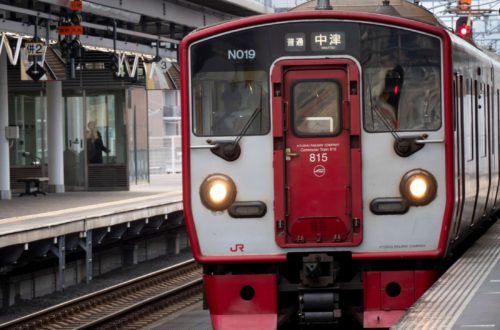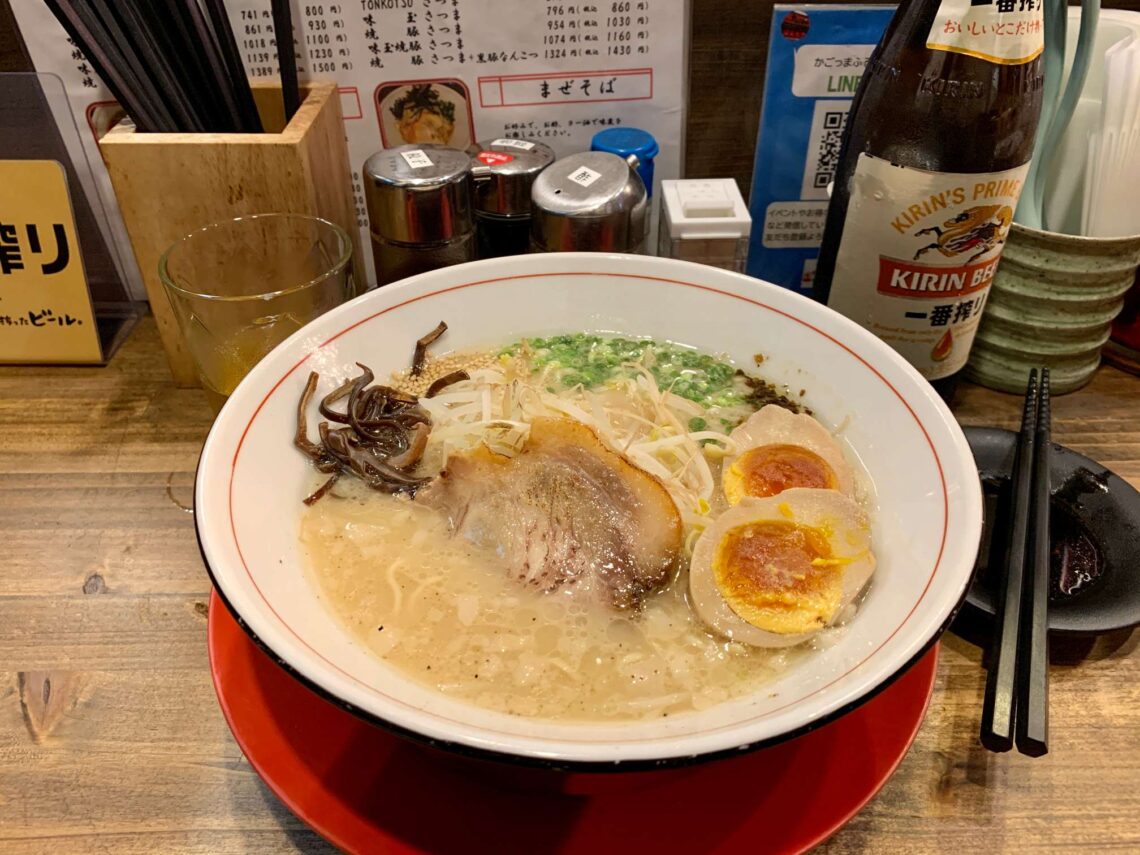
Hakata Ramen – The Complete History of Fukuoka’s Valuable Soul Food
Table of Contents
Intro
Have you ever heard of the hearty soul food known as Hakata Ramen (博多ラーメン)? Not only is this hearty delicacy a symbol of delicacy for the city of Fukuoka (福岡), but it has also transformed from a roadside stall dish to an overseas brand. In fact, famous ramen-chain stores including Ippudo (一風堂) as well as Ichiran (一蘭) helped in accelerating the delicacy’s fame into international level. To learn more about this hearty dish, let’s dwell further into its rich history.
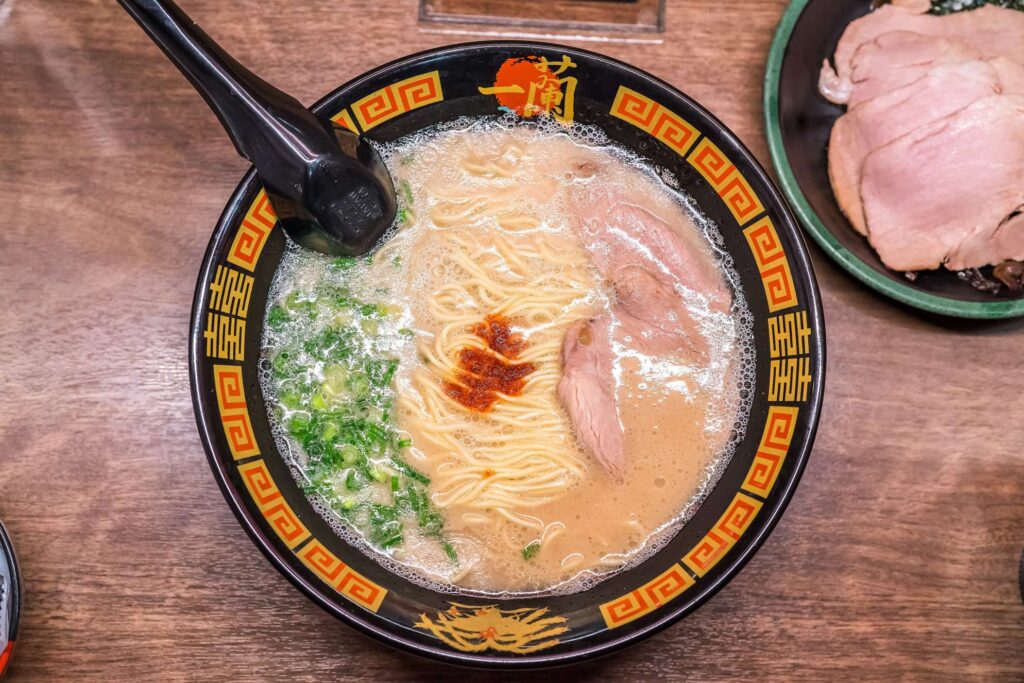
History of Hakata Ramen
Its Roots of Origin
Believe it or not, Hakata Ramen (博多ラーメン) didn’t actually started from Fukuoka itself, and it wasn’t even called Hakata Ramen to begin with. Rather, its roots stemmed from a town called Kurume (久留米) known for its craftsmanship. And the stall that started it all is the Nankin Senryo (南京千両); located in front of the bustling Nishitetsu Kurume Station (西鉄久留米駅).
In 1937, the owner of the stall, Miyamoto Tokio (宮本時男) enthusiastically crafted a new concoction by mixing pork broth with a small touch of chicken bones; while using thin noodles known as Somen (素麺). This early result is a clear pork broth soup ramen (or Tonkotsu Ramen/豚骨ラーメン in Japanese); resembling more towards the Nagasaki Champon (長崎ちゃんぽん), another renowned local delicacy on its own right.
The evolution does not stop there as later in the 1940s, various ramen chefs transformed the clear soup into a much heavier and thicker version. One particular ramen stall in Kurume, Sanku (三九) accidently overboiled its pork bones; resulting in a more cloudy version of the soup. For a soup to turn cloudy, the boiling has to be done for hours and hours.
The disappointed chef nevertheless took that one fateful tasting of the soup; which in a twist of fate turned out to be tasty. No sooner than later, he began selling the delicacy with the cloudier variant of the broth. This version proved to be popular; and the dish earning its named as Kurume Ramen (久留米ラーメン).
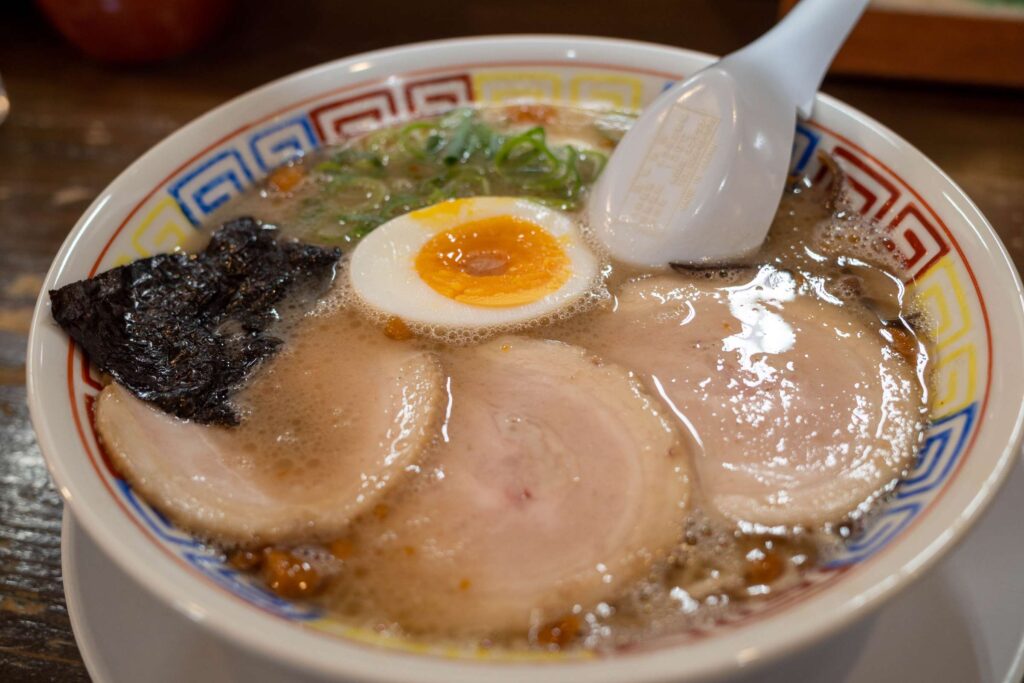
How Did It Expanded
Words of the mouth-watering delicacy soon spread towards the business district of Hakata (博多区) in Fukuoka (福岡). Part of what accelerated the popularity of the meal in Hakata is due to the sheer number of merchants and fishermen in the district. Both fishermen and also merchants were some of the busiest occupations in the district; having almost no time to spare and a hearty breakfast to start the day was what they needed the most to start the day.
And the ramen turned out to be the perfect meal for them, with its thin and easily chewable noodles, as well as rich in flavour pork broth soup. The thin noodles also meant that it is easier to cook them and the customers do not have to wait for a long time. Given the surge of stalls and small carts (yatai/屋台) selling ramen in Hakata, the meal was eventually given the name as Hakata Ramen.
In particular, the ramen became extremely popular in the Nagahama Fish Market (Nagahama Sengyo Shijo/長浜鮮魚市場) in Hakata especially among the fishermen. In fact, chefs even had to come up with a new refill system called Kaedama (替え玉); in order to accommodate the increasing number of customers who demand second serving of noodles. Ramen served around the fish market thus earned the name, Nagahama Ramen (長浜ラーメン).
Today, Hakata Ramen is the symbol of delicacy for the city of Fukuoka. In fact, it became one of Japan’s Three Great Local Ramen; alongside the Sapporo Miso Ramen (札幌味噌ラーメン) and the Kitakata Ramen (喜多方ラーメン). And it remains a testament on how trial and errors and accidents sometimes lead to incredible recipes.
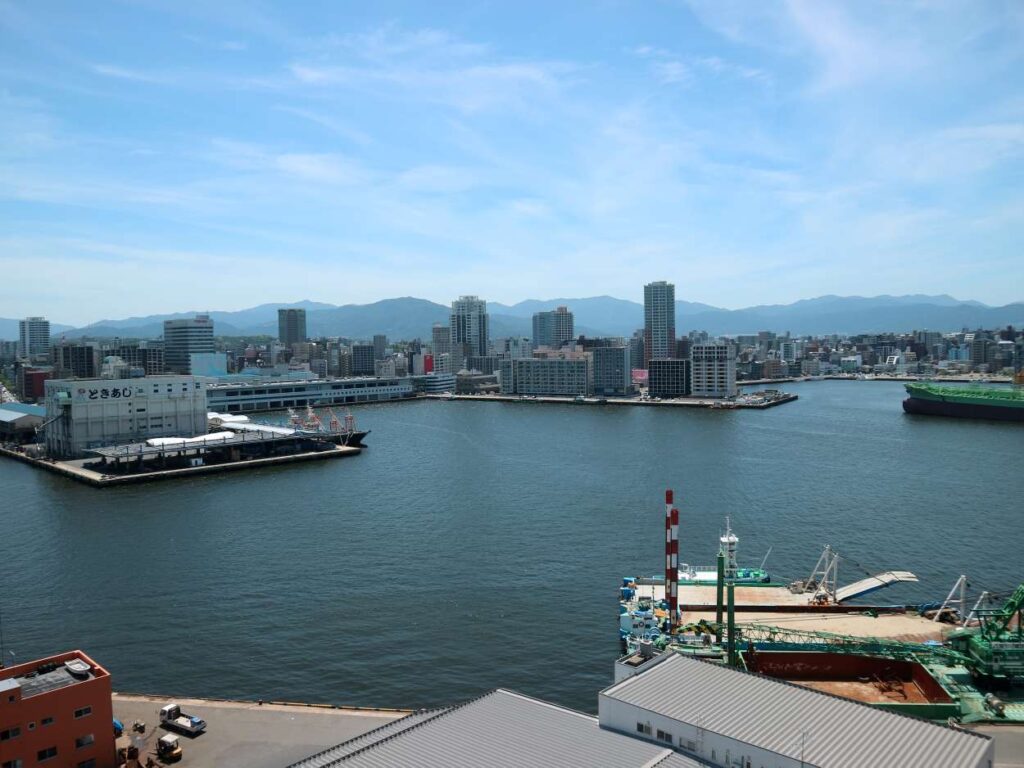
About Hakata Ramen Itself
The Broth
Like every ramen or noodles; the soul of Hakata Ramen lies in its savoury broth. The base of the broth is tonkotsu (豚骨), created from rolling boil the pork bones for hours and hours. As a matter of fact, the process can take up from 6 to 18 hours; depending on the restaurant. And the reason for such a process is to extract the flavour out of the pork bones. Additionally, the collagen and fats will dissolve in the bone marrow; giving the broth its milky white appearance.
As a result, the tonkotsu broth features a rich and savoury porky flavour that will tantalise your taste buds. The rich-flavoured soup requires minimal seasoning, in which the most common seasoning used is salt (shio/塩), which not only gives the extra kick to its flavour; but also retaining its milky appearance.
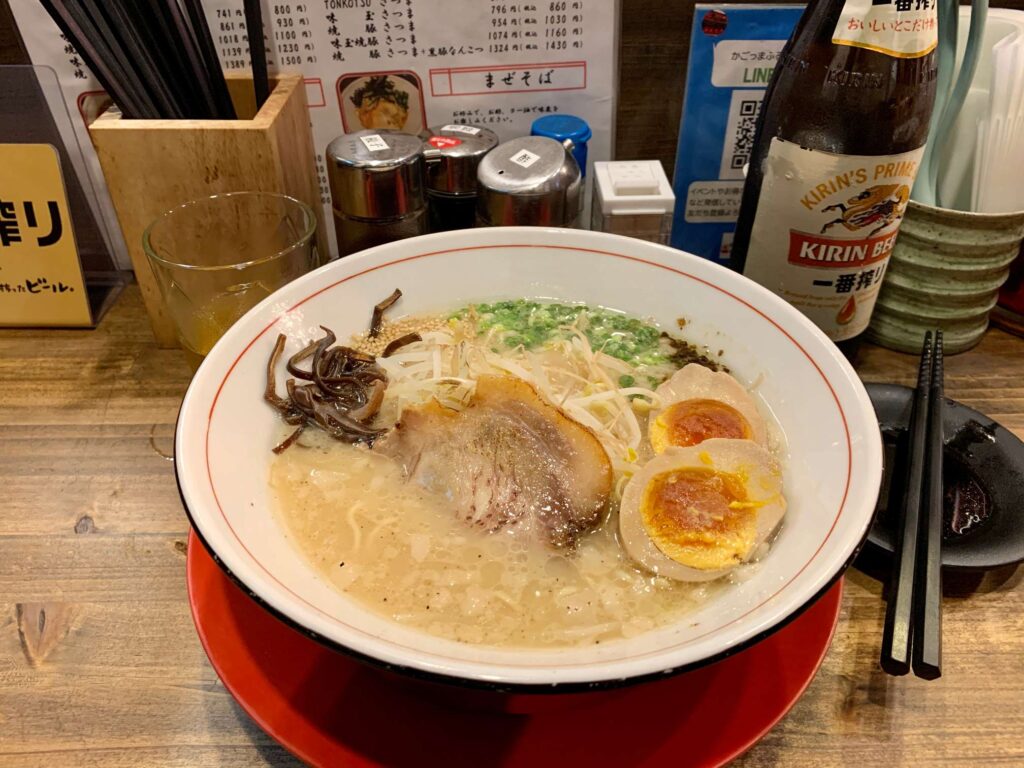
The Noodles
As for the noodles themselves, Hakata Ramen favours heavily towards thin straight noodles; given it’s historical background as a hearty meal for busy workers. Not only this means that the noodles are easier to cook, but it is also easily chewable and allows one to savour the rich-flavoured broth to its fullest. Moreover, the noodles come in various textures which are as below:
- Extra soft (bari-yawa/バリ柔)
- Soft (yawa/やわ)
- Medium (futsu/普通)
- Firm (kata/かた)
- Extra firm (bari-kata/バリカタ)
- Extra extra firm (bari-gane/針金)
- Noodles cooked in water for just an instant (kona-otoshi/粉落とし)
- Noodles cooked in steam for just an instant (yuge-doshi/湯気通し)
Now if you are confused with the sheer amount of options for textures; fret not as the below section will show which are the best options to choose.
- If you prefer softer options or a porridge lover, choose extra soft or soft.
- For first timers, choose medium. (Note that if you do not say anything regarding the texture to chefs, chefs will automatically provide you with medium.)
- If chewy is your kind of preference, choose either firm or extra firm. Extra extra firm is for those who desire a greater challenge for your self.
- Kona-otoshi is considered a special category. The chef will cook the noodles by dipping it in the water for a few seconds just to remove any flour powder.
- Yuge-doshi on the other hand, involves the noodles being passed through steam without even being boiled.
- Both Kona-otoshi and Yuge-doshi are mainly for the seasoned diners or connoisseurs; aka hardcore foodies.
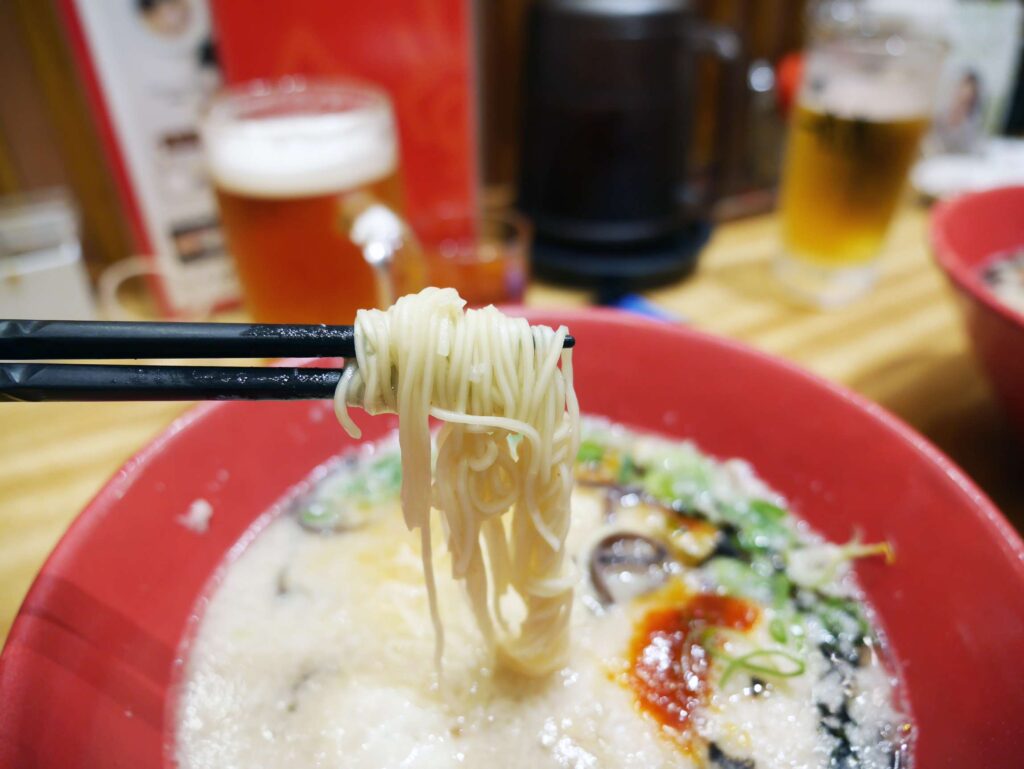
Other Ingredients and Toppings
Hakata Ramen’s ingredients in general are quite simple. A Hakata Ramen is certainly not complete without the presence of slices of juicy roasted pork belly (Chashu/チャーシュー). There are also the green onions and seaweeds (Wakame/海苔) that contribute to the sweetness of the dish. The earthy flavour of the wood ear mushrooms serves as a contrast against the rich-flavoured broth.
Let’s not forget also a fan-favourite ingredient; the ever-important ramen eggs (aji-tsuke tamago/味付け卵 or aji-tama/味玉 for short). Its creamy and silky texture as well as mix of sweet-and-salty flavours, makes it a must-have for any ramen broths.
Additionally, restaurants in Hakata provide their own toppings free on the table. The crunchy beni-shoga (紅生姜); or red pickled ginger has a tangy and sour flavour, which serves to put a little spice into the soup.
Then, there is also the karashi takana (辛子高菜) or pickled leaves mustard green. Its crunchy, slightly spicier and more peppery; serving to give a kick to your taste buds while savouruing the warm and hearty pork broth. Be sure to try them both to see which is your favourite!
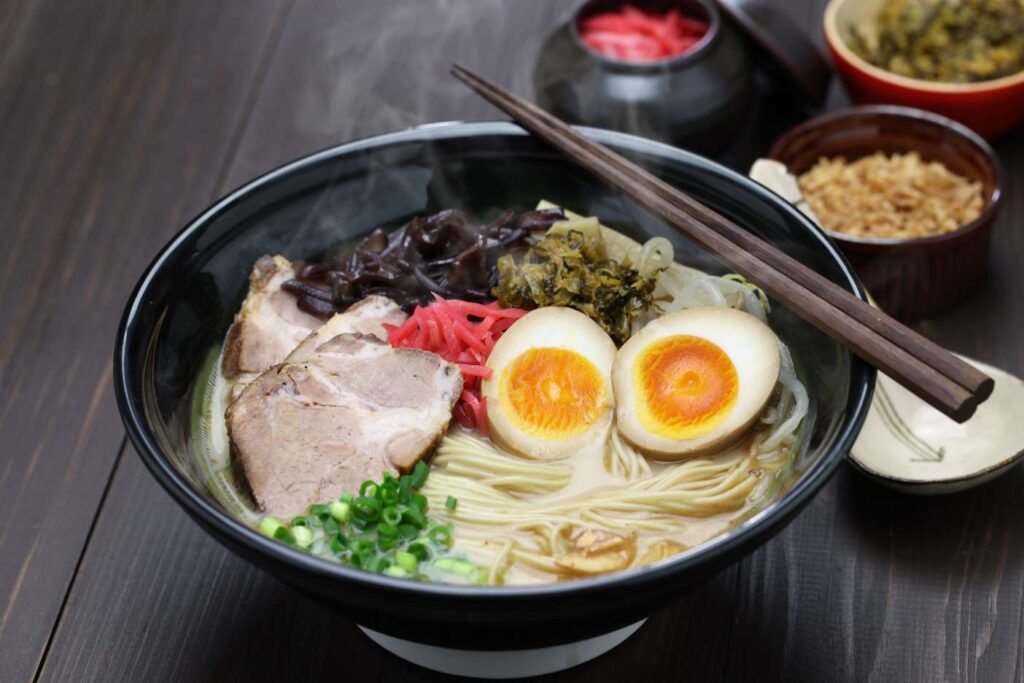
About Kaedama
Did you know that most stalls in Fukuoka offer a unique refill system for your noodles? This unique system is called Kaedama (替え玉) and is utilised in many ramen stalls across Japan. In fact, the founding of this system is said to be accredited by none other than Hakata Ramen itself. The reason behind this is because Hakata Ramen can become easily soggy due to its thin noodles. As such, many stalls decided to offer second servings of noodles to meet their customer’s demands; given how breakfast is essentially the most important meal for the fishermen and the merchants.
Eventually, this system was given the name Kaedama (替え玉) and the practice became widespread across the ramen stalls in Japan. In order to order a second serving of noodles, simply tell the staff “kaedama wo onegaishimasu/替え玉をお願いします” or “please give me another serving”. The extra serving will be served in another bowl and you can then pour the noodles into your existing bowl of soup. Kaedama on average costs around a measly 100-200 Yen for each noodle; and you can order as many as you like if you are willing to pay.
Where to Eat in Fukuoka
The Big International Brands in Fukuoka
Being the trademark food of Fukuoka, there are certainly no slouch in number of restaurants serving Hakata Ramen. Both Ichiran (一蘭) and Ippudo (一風堂) are giant national chain restaurants that originated from Fukuoka and pride themselves as masters of the delicacy.
In fact, Ichiran is also known for its sale of instant ramen and cup noodles across worldwide. While there are plenty of outlets across the city such as the ones in the shopping district of Tenjin (天神) and the Canal City (キャナルシティ), one should pay a visit to it’s pioneering store at Nanokawa (那の川). Ichiran features a unique Ramen Focus booth; one that provides customers to have a private space free from the noises of other customers chatting and chefs moving around constantly; allowing one to simply enjoy the meal entirely in peace.
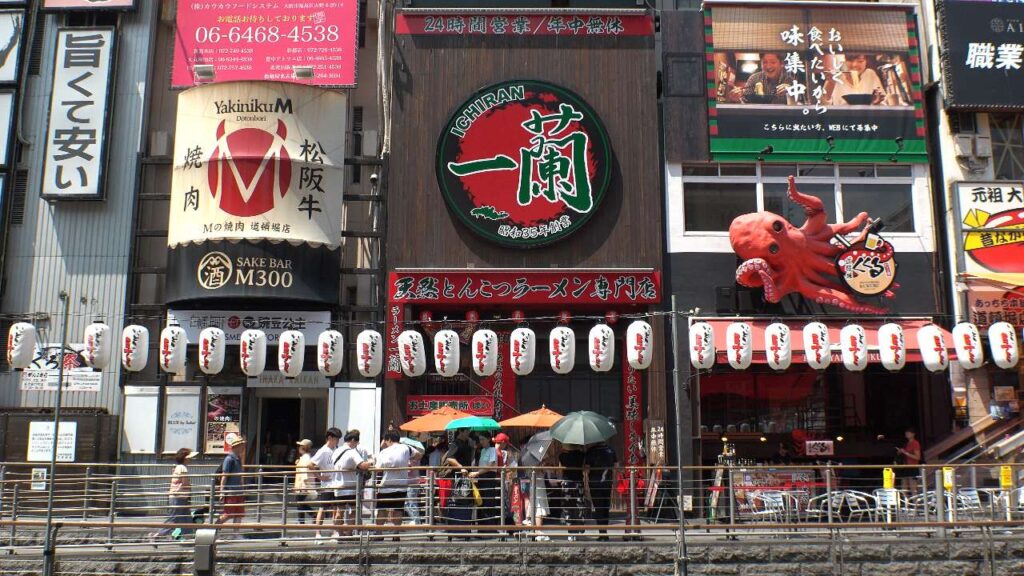
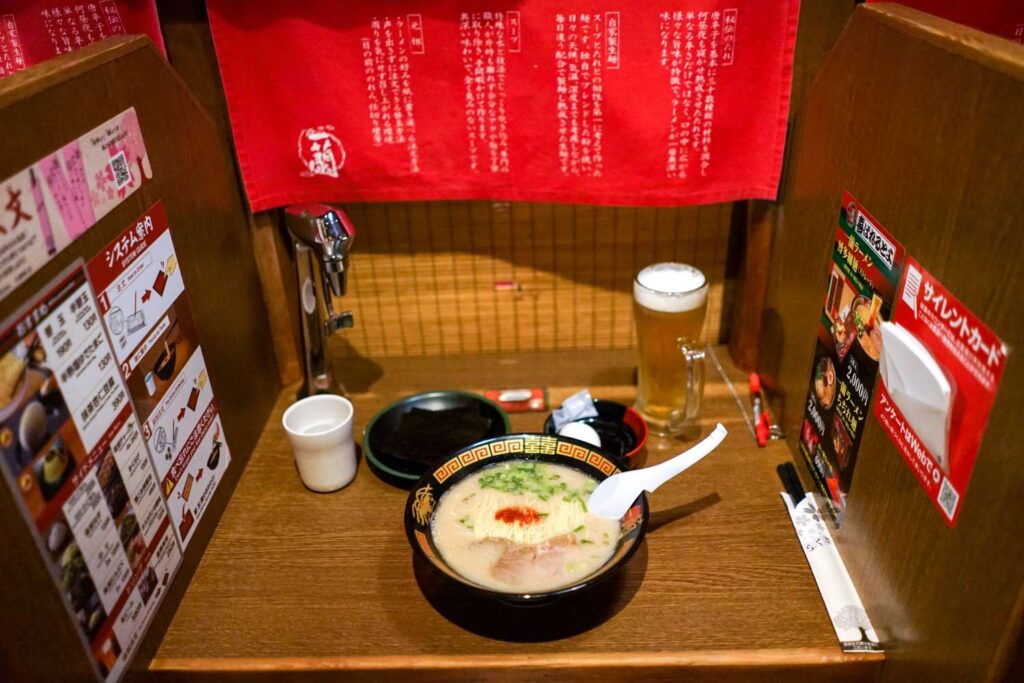
And then, there is also Ippudo that was started in 1985 by chef Kawahara Shigemi (河原成美); an entrepreneur who brought the delicacy to fame at an international level by storm. Ippudo features its iconic menu of both Shiromaru Motoaji (白丸元味), the original and creamy Hakata Ramen as well as Akamaru Shinaji (赤丸新味), which includes their specially-made miso paste which enhances the richness of the overall taste. There are various branches across Japan and worldwide, but what better experience than to visit the original Ippudo Daimyo branch (一風堂大名本店) itself in Fukuoka.
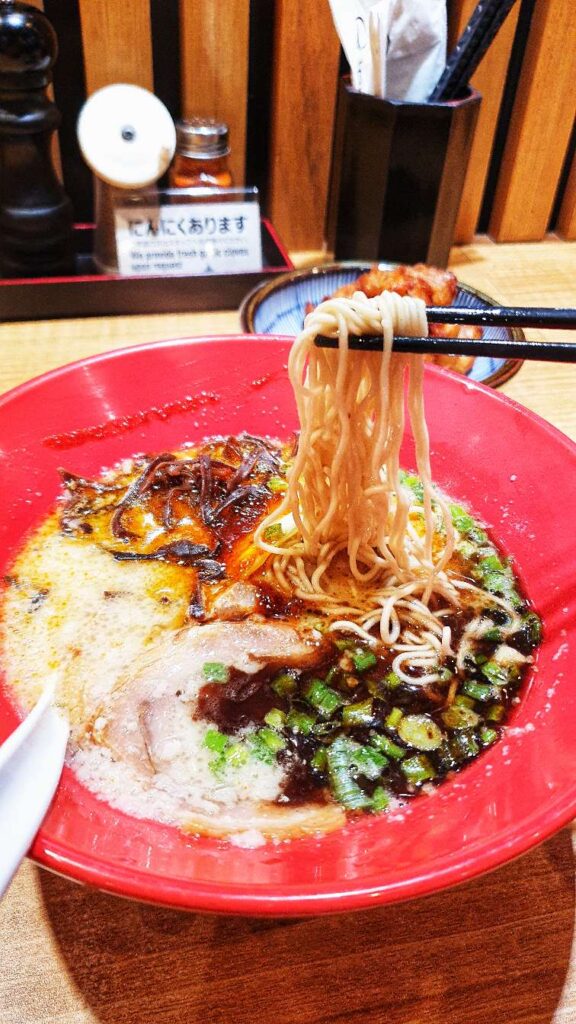
For More Local Options
Apart from the international brands, there are plenty of other more down-to-earth options to choose from for Hakata Ramen. Hakata Issou (博多一双) especially is a local fan-favourite is well-known for its ‘Cappucino Tonkotsu’. And no its not a drink itself but rather the heavy and thick cappuccino-like soup the shop has to offer. This shop also apparently uses 2-3 times more pork bones for their broths; which you won’t be able to ignore the smell even if you want to. Hakata Issou features 3 outlets in Fukuoka; one near the Hakata station, another in Gionmachi district (祇園町) and in Nakasu (中州).
There is also Hakata Ramen Shin Shin (博多らーめん Shin Shin) that serves lighter and gentler broths. The broths here are mixed with chicken bones to provide a lighter texture while adding a small touch of chicken essence to enhance the flavour. Shin Shin features multiple outlets across Fukuoka including Tenjin (天神) and Sumiyoshi (住吉), while opening up until 3am daily which makes for a wonderful late night drinking spot.
And then, there is also Ganso Akanoren Setchan Ramen (元祖 赤のれん 節ちゃんラーメン), one of the city’s most oldest Hakata Ramen shops. Established in 1946, the shop seasons its soup uniquely by using soy sauce instead of the usual salt; giving an extra kick in saltiness. Also, be sure to subscribe as I will be covering more local authentic and delicious Hakata Ramen outlets in the future.
Loving the content here?
Subscribe and get your free hidden gems in Japan bucket list here.
For Those Seeking a Unique Dining Experience
Did you know that the renowned Canal City shopping center in Fukuoka features several unique spots to savour Hakata Ramen? Head up to the 5th floor of this spacious shopping complex towards the Ramen Stadium; a ramen food court that opens daily from 11am to 11pm. Ramen Stadium contains a total of 8 stalls; selling ramens from Hakata, Kurume and as far as Tokyo, Sapporo and Kyoto.
Look out especially for Nagahama Number One (長浜ナンバーワン), Ramen Jinanbo (二男坊) and Shodai Hide-chan (初代秀ちゃん) that offers a tasty selection of the said delicacy. Alternatively, check out Kurume Honda Shoten (久留米 本田商店) which sells the Kurume-variant ramen; the origin of Hakata Ramen known for its much thicker and creamier broth.
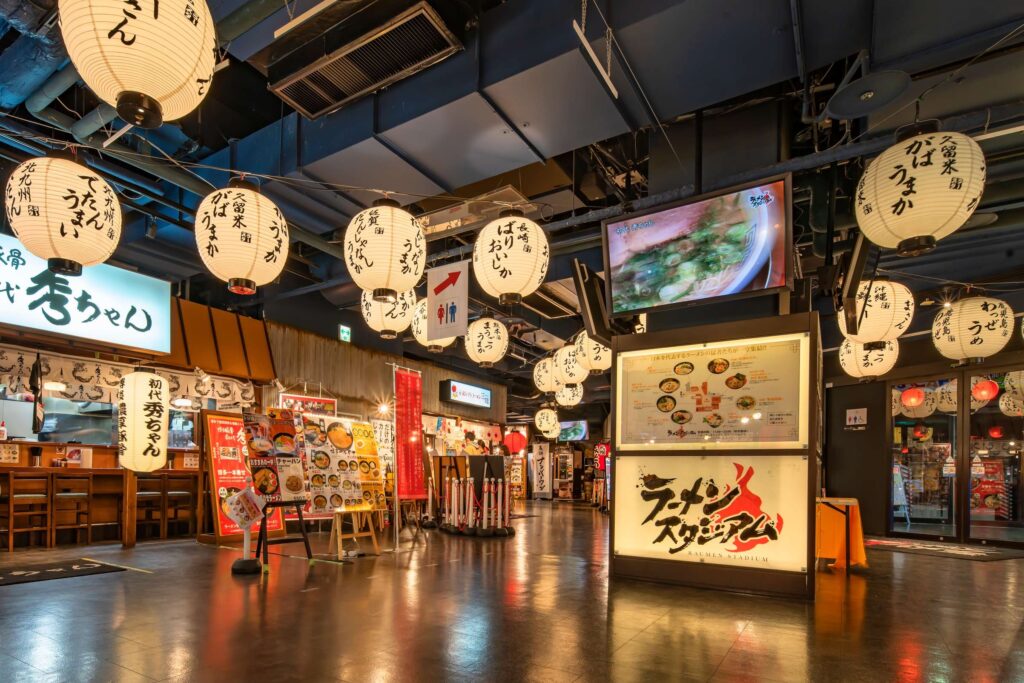
Alternatively, consider the unique dining experience a Yatai has to offer. Yatai (屋台) refers to the traditional two-wheeled mobile food stands that sells meals such as ramens (ラーメン), oden (おでん) and skewered chickens (yakitori/焼鳥). These stalls are only opened during evening from 6pm onwards; and are closed during the day or during a bad weather.
There are undeniably lots of these located across the city of Fukuoka; especially along the city’s canals just outside Canal City. A unique experience to look out for is to dine-in one of these stalls and savour a bowl of Hakata Ramen and a glass of beer while enjoying the gentle breeze along the peaceful canal. Do note however that this spot has recently became more popular among tourists. If you are looking for somewhere more quieter and authentic, check here for other Yatai options across the city.
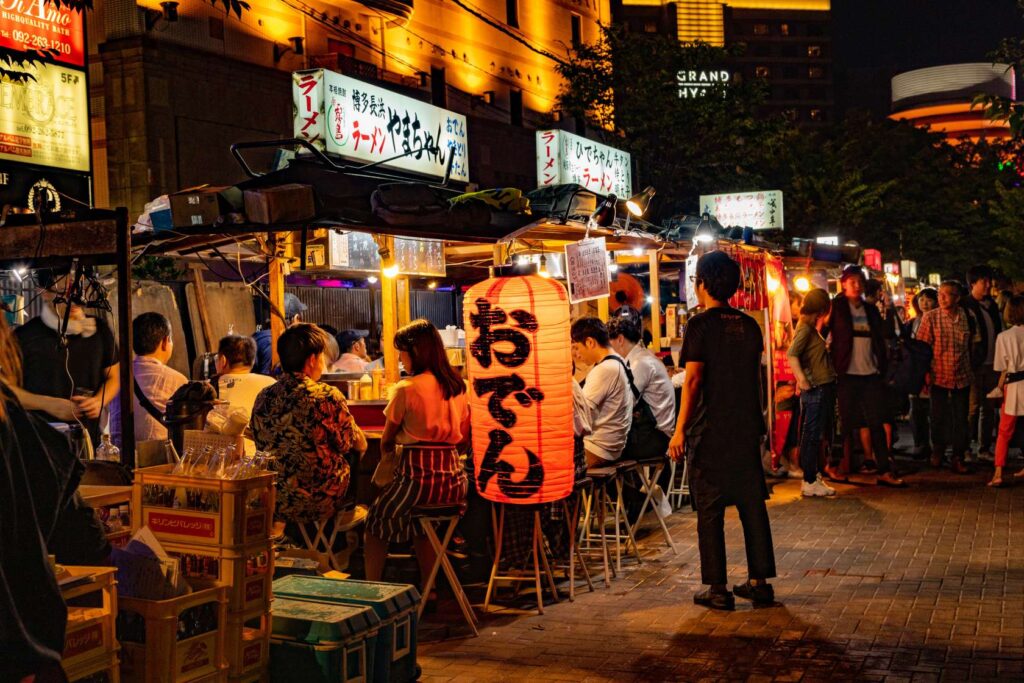
Don't Miss Out on the Nagahama Ramen
If you are a foodie, don’t miss out on the Nagahama Fish Market (Nagahama Sengyo Shijo/長浜鮮魚市場). Being the largest fish market in the island of Kyushu (九州), it is certainly no slouch with its wide assortment of fresh seafood selections. In fact, many locals will line up outside the building from 7am onwards not just for its fresh seafood and seafood bento (弁当) boxes, but also to watch the tuna filleting show and participate in the tuna auction.
There is also the nearby hidden mom & pop ramen shop just 10 minutes walk away from the market called Ganso Ramen Nagahamake (元祖長浜屋). Don’t be fooled by this simple-looking ramen shop though, as this shop has a long history in its contribution to Hakata Ramen. Started in 1952 as a small food stand, this shop is the one that not only developed its own variant of the Nagahama Ramen (長浜ラーメン) but also the one that pioneered the Kaedama (替玉) system.
Nagahama Ramen is similar to Hakata Ramen; but with a lighter broth that is still creamy and savoury. The noodles are slightly thinner than the Hakata variant; a nod to the fact that the meal has to be served quickly to the busy fishermen and merchants back in those days. While enjoying your bowl of ramen, don’t feel shy to slurp louder as it’s part of the Japanese culture to show appreciation of the meal. The closest station to both the fish market and the ramen shop is Akasaka station (赤坂駅) which is 10 minutes walk away.
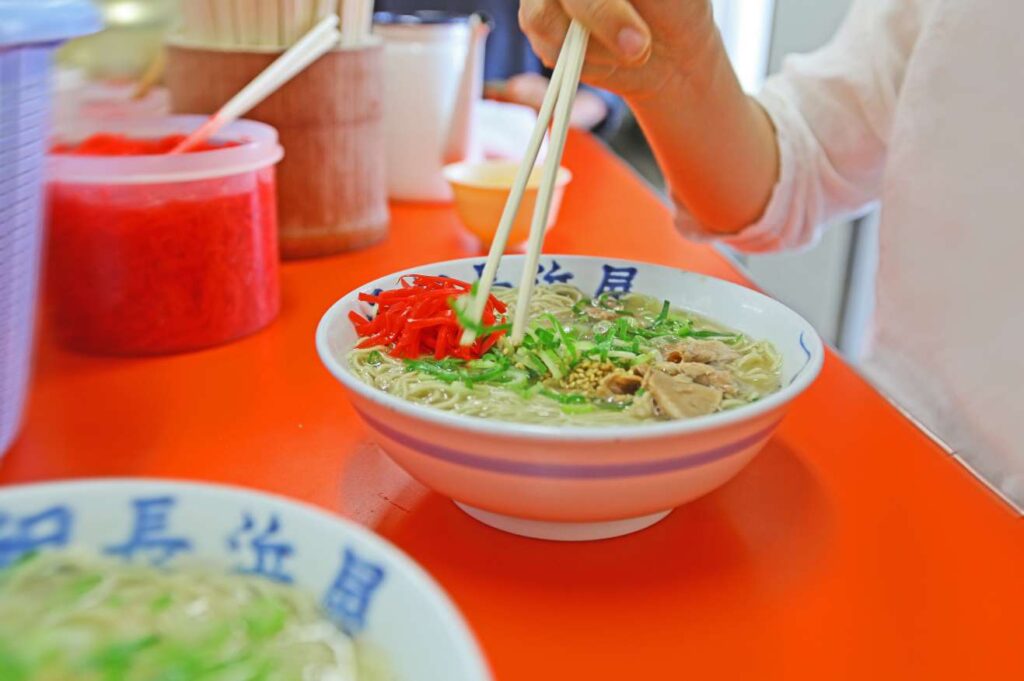
Overall Thoughts
Hakata Ramen is undoubtedly the soul food of Fukuoka as well as an iconic food in Japan. Simple and hearty, it represents a local meal that has evolved into an iconic soul food; while bringing joy to the citizens and labourers of Fukuoka. Don’t forget to subscribe as I will cover more hidden attractions in Fukuoka as well as mouth-watering food in the future.
Loving the content here?
Subscribe and get your free hidden gems in Japan bucket list here.


You May Also Like
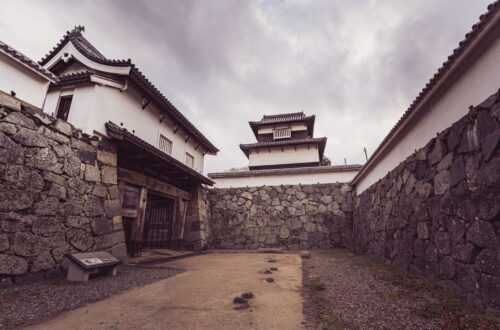
Fukuoka Castle – The Beautiful Castle Ruins Within a City
April 8, 2023
Tama Densha – How to Plan Your Half-Day Trip in Wakayama
April 28, 2025